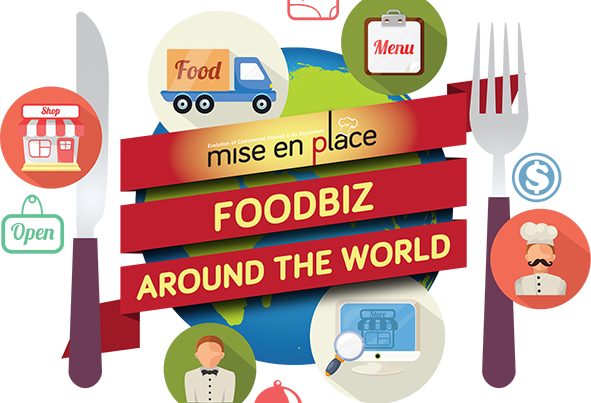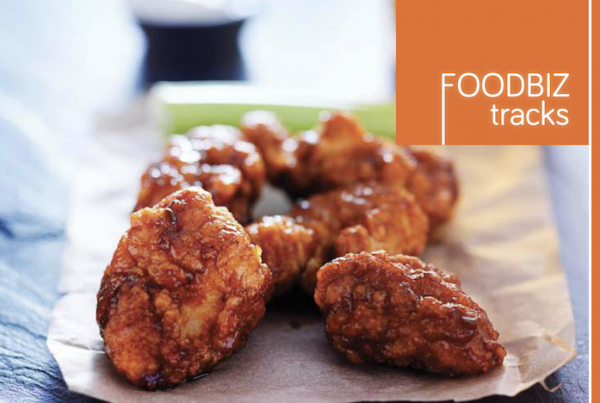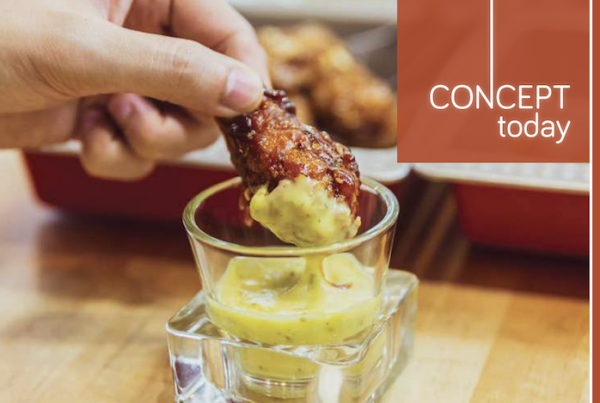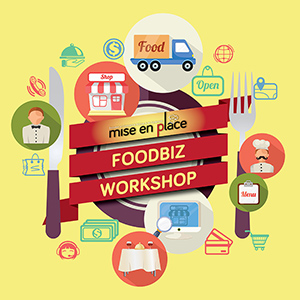They say seeing is believing in the current foodservice trends. Does making your chef’s skill a focal point of the evening truly make up most of your business?
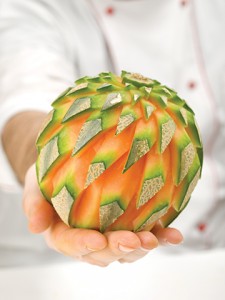 There’s no denying that a chef requires top-level skills; but then, there are skilful chefs and performers. I’d like to call them performance chefs if you please. Take your local street food for example; now, they may not be Le Cordon Bleu graduates but one has to take note of their artistry. Like the Turkish ice cream seller on the streets of Istanbul, where tourists flock to hear the loud singing and be entertained by ice cream tricks. At the end of the day, you’ve got to remember that customers aren’t just diners anymore. And, while formal dining rooms, stiff service, silver cloches – high-end hotel restaurants of yore type settings still exist, it doesn’t satisfy the modern culinary cravings. As fancy as things looked, the kitchens at the back were another matter: all strip lighting and functional industrial catering equipment – not that we don’t know about them.
There’s no denying that a chef requires top-level skills; but then, there are skilful chefs and performers. I’d like to call them performance chefs if you please. Take your local street food for example; now, they may not be Le Cordon Bleu graduates but one has to take note of their artistry. Like the Turkish ice cream seller on the streets of Istanbul, where tourists flock to hear the loud singing and be entertained by ice cream tricks. At the end of the day, you’ve got to remember that customers aren’t just diners anymore. And, while formal dining rooms, stiff service, silver cloches – high-end hotel restaurants of yore type settings still exist, it doesn’t satisfy the modern culinary cravings. As fancy as things looked, the kitchens at the back were another matter: all strip lighting and functional industrial catering equipment – not that we don’t know about them.
While some skill-centric restaurants have an open kitchen design which gives easy viewing access to customers, sometimes its about the end product. Take the art of fruit and vegetable carving: a common technique in Europe and Asian countries, and particularly popular in Thailand, China and Japan. The art of food carving uses many different tools, usually ordinary items but some specific to just fruit or vegetable carving. Tools like pens to draw on the carving one wishes to make, carving knives to give shape to the carvings and peel zester- a tool used to create strips and grooves. Food carving is definitely a skill master y but is seldom seen done in open kitchens. A skill like this elevates the appearance in food presentation.
Let’s take a tour around the world at the many skill-centric business owners of various levels:
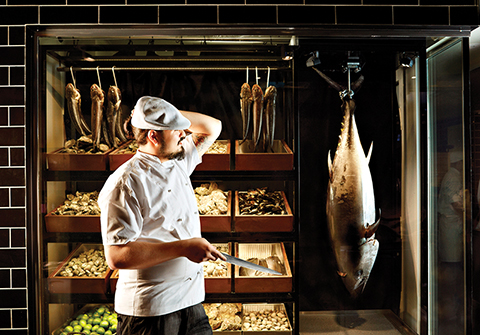
QT SYDNEY, AUSTRALIA
Juliet Kinsman of Independent even went on to say that if you’d told proprietors then that one day diners would demand to eyeball the cooking team at work, they’d have blanched. Now butchery’s brought to the fore and labour is par t of the flavour – we want display as we dine. Take QT Sydney for example, seeing sushi carved from a four-foot tuna in a glass fridge at the front of the restaurant is certainly thrilling.
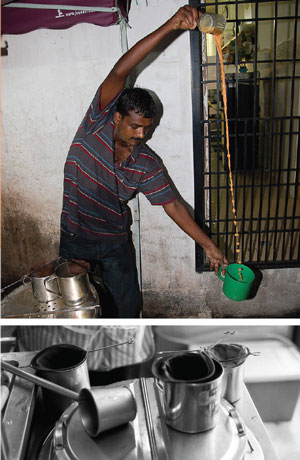 JOHOR, MALAYSIA
JOHOR, MALAYSIATeh tarik can be commonly found in restaurants, outdoor stalls and kopitiams in Malaysia, Singapore and Brunei. Its name is derived from the pouring process of pulling the drink during preparation. It is made from black tea and condensed milk. An element of showmanship exists in the preparation of teh tarik. The ability to drag a long stream of tea above the heads of the patrons without giving them a shower is an amusing novelty for the locals and tourists alike. In Malaysia, there are occasions where teh tarik brewers gather for competitions and performances to show their skills. Teh tarik has become recognised along with nasi lemak as part of the food and beverage heritage of Malaysia by the Malaysian government ministry.
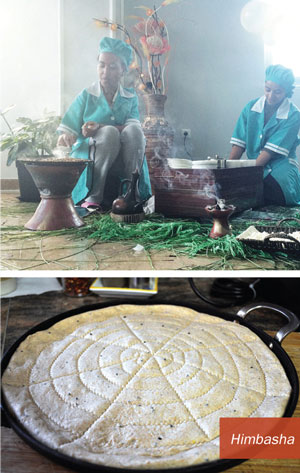 VARIOUS PLACES, ETHIOPIA
VARIOUS PLACES, ETHIOPIAA traditional Ethiopian coffee ceremony will likely take at least twenty minutes from star t to finish for the first cup of coffee, but it is absolutely well worth the wait. The host pours the coffee for everyone by moving the tilted boiling pot over a tray with small, handle-less cups without stop until each cup is full. Some of the coffee will inevitably
miss the cup but this is done to prevent the coffee grounds from contaminating the brew. One extra cup is poured each time. The grounds are brewed three times: the first round of coffee is called awelin Tigrinya, the second kale’i and the third bereka(to be blessed). The coffee ceremony may also include burning of traditional incense. People can choose to add sugar to their coffee, or in the countryside, sometimes salt or traditional butter. The beverage is accompanied by a small snack such as popcorn, peanuts or himbasha.
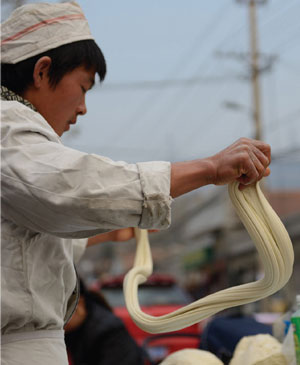 XINJIANG, CHINA
XINJIANG, CHINAXinjiang street food is interesting in itself as it has a distinct blend of Turkic and Mongolian ethnicity. So, although Xinjiang cuisine shows some hints of what one might call traditional Chinese influence, its dishes are often quite different from mainstream Chinese food. The pulled noodles or laghmanis widely enjoyed by locals and travellers alike for the taste and its flair for its preparation process. Pulled noodles are tossed, beaten and pulled to ensure the right consistency before being dunked in soups and suoman, a blend of noodles, vegetables and meat.
GOT YOUR JUICES FLOWING?
If you’re thinking of setting up a restaurant with a business strategy that attracts clientele in terms of great skill. Ask yourself these basic questions for a clearer direction.
These may sound like a fair bit of questions but the truth is that these are going to be the things you will have to address as you start to run and grow your restaurant business. Remember, think carefully about each area before you get the plans going. Stay up-to-date with the latest news and map your plans out as you go along.
Have you got the right equipment & supplies?
The equipment you choose should reflect the style and nature of your business. It’s important to see how your equipments will save you time, reduce noise pollution and food waste, and is aesthetically pleasing. Your equipments help enhance your chef’s skills but are they safe for handling particular in front of a wide audience? They should also be easy to reach.
Who’s your competition?
You’ve got to research your competition fiercely, and learn from them. What can you do differently to stand out? How will you be better? You need to identify what your restaurant aims to do that no one else in your area is doing. Take it up a notch and come up with your brand’s own secret sauce or specialty. Your theatre-style experience pulls the crowds in but what’s going to keep them coming back for the same show?
How are you going to identify with your patrons?
You need to identify and research who will patronise your restaurant by finding out who they are, where they are currently dining and of course, how you’re going to attract and gain them. If you are not taking the open kitchen route, how will you display your tantalising dishes? Make sure you have them written down beautifully described in your menu. And, as all restaurants experience slow times, you need to plan for that appropriately. Do you think your restaurant will able to handle it?







